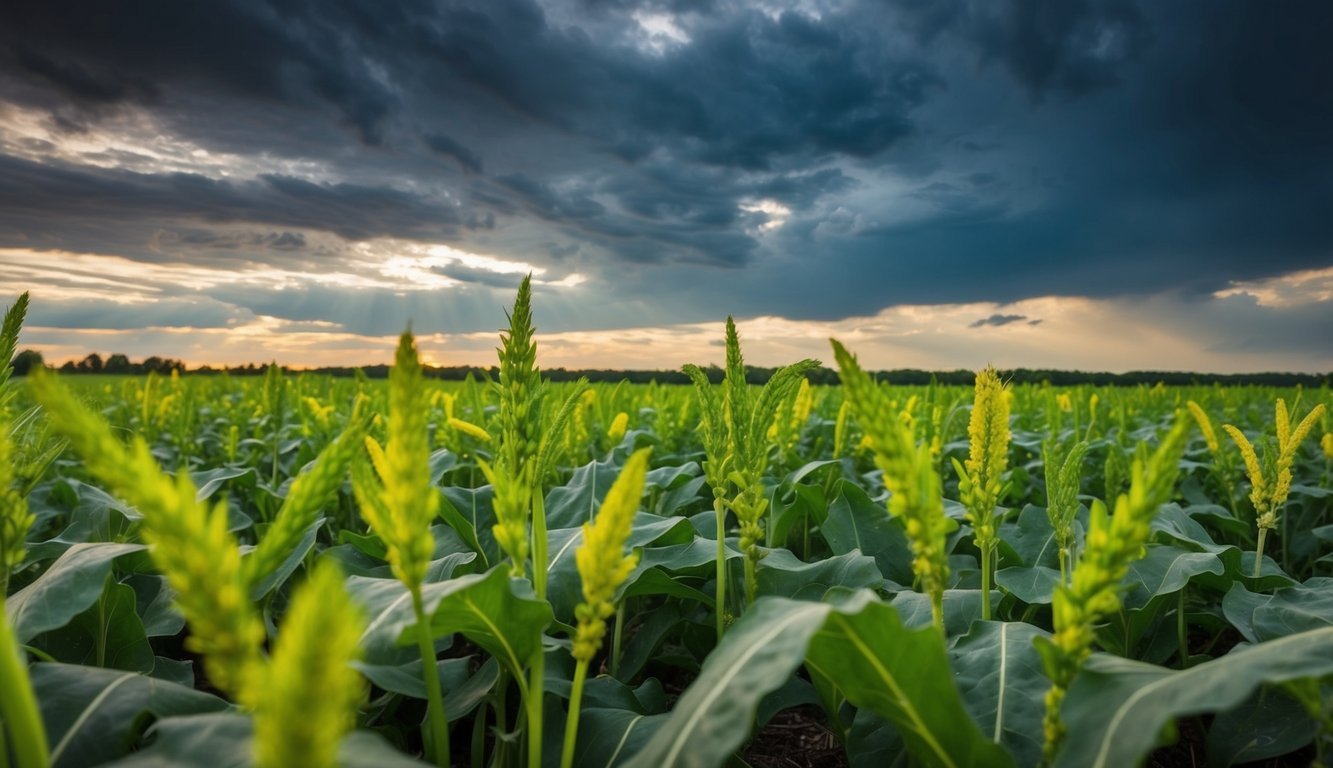
In recent years, a team of weed scientists has uncovered critical findings regarding herbicides and their diminishing effectiveness against agricultural weeds in response to changing climate conditions.
This research, which includes contributions from specialists at the USDA Agricultural Research Service and the University of Illinois Urbana-Champaign, extends beyond soil-applied herbicides to post-emergence (POST) herbicides, demonstrating that their efficacy is also compromised by variability in weather.
Research Methodology and Findings
The study utilized an extensive 30-year dataset gathered from 16 different Extension weed science programs across the U.S. Corn Belt, notably integrating insights from Illinois Extension.
It highlighted how shifting weather patterns significantly impact the performance of three widely used POST herbicides against key weeds that threaten corn and soybean yields.
If weed control continues to falter—whether through preventative (PRE) or POST methods—it could lead to serious agricultural repercussions, ultimately jeopardizing global food security.
According to lead author Chris Landau, a postdoctoral researcher with USDA-ARS, the interplay between weather conditions and herbicide performance is complex and extends beyond the immediate period after application.
Their findings showed that fluctuations in air temperature and rainfall can affect herbicide effectiveness not just during application, but in the days immediately before and after.
By analyzing a vast array of weather conditions over three decades, the team was able to establish a clear relationship between these atmospheric variables and herbicide efficacy in diverse environments.
Temperature and Precipitation Impact
The research revealed that, for certain herbicides like fomesafen, glyphosate, and mesotrione—key players against weeds such as waterhemp, giant foxtail, and morning glory—average air temperatures below 66 degrees Fahrenheit or above 77 degrees Fahrenheit diminished their effectiveness.
While the historical dataset didn’t provide a full explanation for reduced weed sensitivity under these temperatures, other studies have suggested possible reasons.
For example, warmer days leading up to application can accelerate weed growth, resulting in hardier plants that are less susceptible to herbicides.
On the flip side, high temperatures post-application might boost the weeds’ metabolic processes, quickly reducing the impact of the herbicide.
Cold temperatures present their own set of challenges, as they can slow plant metabolism and hinder herbicide transport, ultimately rendering these chemicals less effective.
Beyond air temperature, the research also illuminated the essential role of precipitation patterns in herbicide performance.
The findings indicated that dry spells in the ten days preceding herbicide application and excessively wet conditions in the ten days following it significantly influenced efficacy.
Previous studies suggest that drought conditions can lead to thicker plant cuticles, making it harder for herbicides to penetrate.
Additionally, heavy rain shortly after application may wash away the herbicides or trigger stress responses in plants that hinder absorption and distribution within them.
Future Directions and Recommendations
With climate change ushering in unpredictable agricultural challenges—like spring flooding and summer droughts—the implications of variable weather on herbicide effectiveness exacerbate the difficulties farmers encounter.
The research team found that combining glyphosate with fomesafen yielded better weed control across different weather conditions.
However, they noted that relying solely on these POST combinations wouldn’t guarantee total weed management.
Landau advocates for the integration of effective soil-applied residual herbicides along with non-chemical strategies to ensure consistent weed control.
Williams remarked on the need for the field of weed science to adapt and create innovative management tools, pointing out that weeds are evolving faster than current methods can handle.
He expressed optimism that proactive research could develop solutions to these challenges before they escalate, as the repercussions of inaction may be significant.
Source: ScienceDaily

